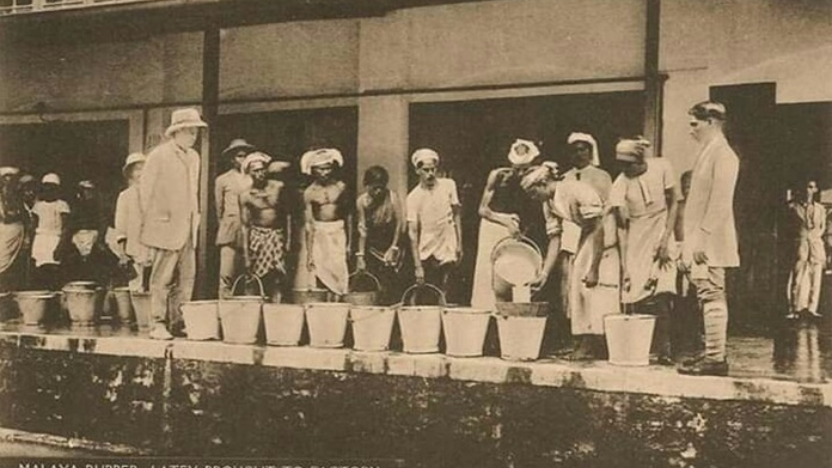For the colonial authorities, Indians were seen as ideal workers hardworking, obedient, and willing to endure the difficult manual labour that European-owned rubber estates required. Most worked on plantations, while smaller numbers-built roads, railways, and ports, or took up clerical and teaching roles. Meanwhile, the Malay population largely remained engaged in farming and fishing, and the tin-mining industry depended heavily on Chinese migrant labour, who negotiated better wages through their headmen. To the British, Indian labour also acted as a counterbalance to the growing Chinese population in Malaya.
The expansion of rubber plantations transformed the Malayan economy. Driven by demand from the automobile industry in the United States, rubber quickly became the country’s most important export. From just a few hundred acres in the 1870s, cultivation grew to over two million acres by 1940, making Malaya the world’s leading producer of natural rubber. This rapid growth was made possible by a seemingly endless flow of cheap labour from South India, where poverty and famine pushed many to seek work overseas.
Life on the estates was harsh. Work was grueling planting, tapping, and weeding from dawn until nightfall for wages that barely sustained survival. A man might earn only thirty-five cents a day, a woman even less. In contrast, Chinese contract workers, paid piece rates, often earned double.

Colonial labour codes promised improvements, but they often served estate owners more than workers. Housing was provided in cramped “lines,” rows of narrow cubicles offering little privacy and poor sanitation. Outbreaks of disease were common, and an English newspaper once remarked that the conditions would not have been tolerated even for hounds in Britain. Schools, when they existed, were makeshift and poorly staffed, as employers had little incentive to educate workers’ children who could instead contribute to estate labour. It was only in the 1930s that trained teachers began to appear, and even then, progress was slow.
By the early 20th century, Indians formed the majority of estate workers, and their presence shaped the very backbone of Malaya’s agricultural economy. In 1918 alone, they made up nearly 60 percent of the plantation workforce. Over the years, various measures were introduced to regulate labour, but wages remained deliberately suppressed. Even when planters considered raising pay during the post–World War I boom, those proposals were quietly abandoned when the expected surge in rubber prices failed to arrive.
Some improvements did come over time slightly better housing, basic medical care, and vernacular schools but they remained modest, and enforcement was uneven. By the late 1930s, however, a shift was underway. Increasing numbers of Indians began migrating independently rather than under the kangani recruitment system, and by 1941, on the eve of the Japanese invasion, the old system was already fading.
The estates were not just fields of rubber trees, they were places where countless lives were uprooted, where stories of sacrifice, struggle, and endurance unfolded. Much of what those workers endured is remembered only faintly in statistics and official records. Yet their labour helped build the foundations of Malaya’s prosperity. Though their voices may be faint today, their contributions remain deeply etched in the history of our nation.
Source / Image Credit : ehm.my , m.aliran, roots.gov.sg, architectural-review
